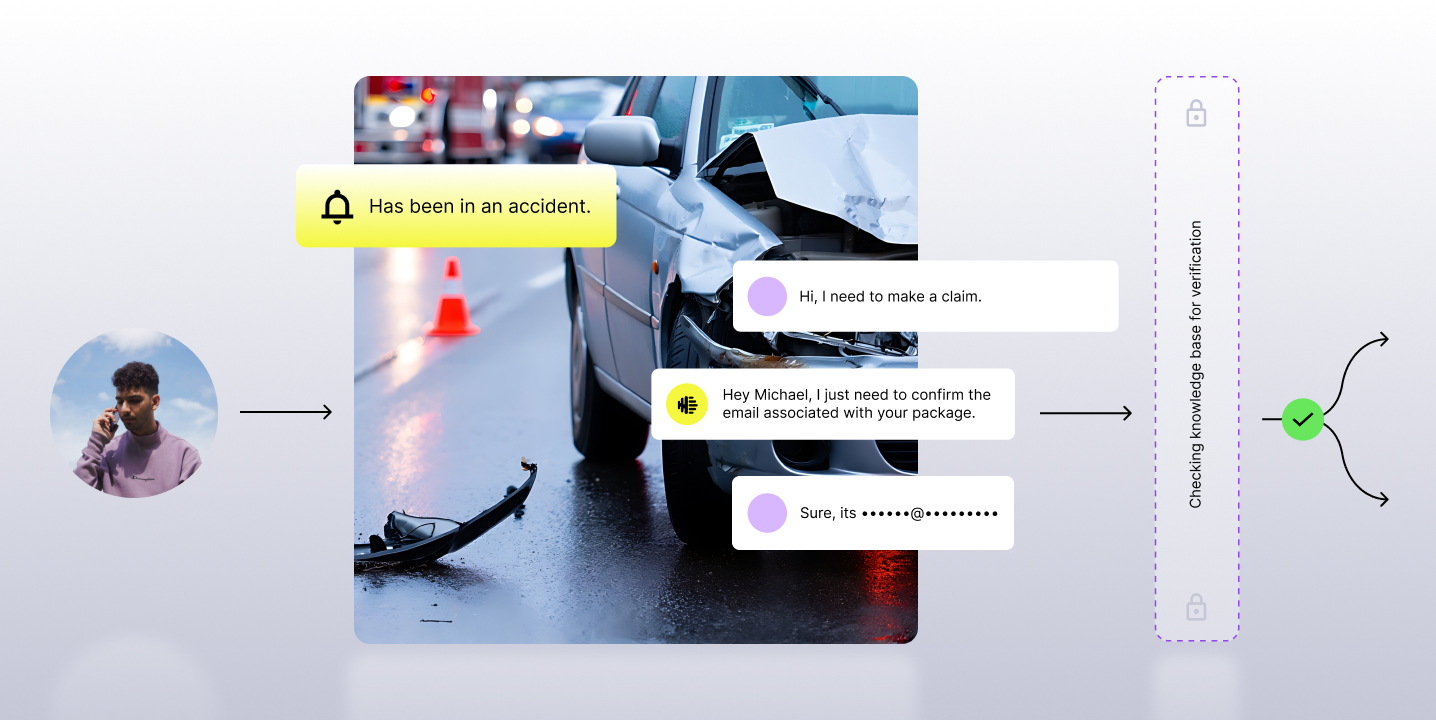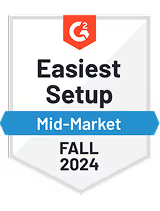Historically sales, especially via cold calls, have had a mixed reputation. But with the right agent enablement programs driven through conversation intelligence and other AI services like understanding pitches that work, script adherence, and coaching on specific soft skills, arms reps with the skills to provide actual value to the customer, thus driving customer loyalty and revenues.
There are many factors that determine the success or failure of a sales effort and most of these factors can be tipped in your favor with the right planning and preparedness. Approaching a sales boot camp requires a well-thought out strategy, and that’s what we’ll cover end-to-end today.
In this guide, you’ll discover the following—
I] 3 major challenges in contact center sales today
II] 5-step process to designing a high volume sales bootcamp
- Setting a vision
- Structuring your bootcamp
- Identifying your most critical soft skills
- Measuring the impact
- The realization philosophy: engage, probe, pitch
Let’s begin, shall we?

3 major challenges in contact center sales today
There are three challenges that contact center sales are experiencing as of today: competition, generic offerings, and lack of time. If any of these challenges are impacting your sales performance, it’s critical to first address the root causes.

1. Competition
There’s competition at every angle, especially with the endless options available on the internet at your customer’s finger tips today. Social media, the web, email marketing and more have replaced phones as the way a consumer discovers and purchases goods and services today.
Here’s where your sales pitch has to be effective right from the first interaction. If your sales pitch doesn’t land, consumers have no qualms hanging up the phone.
2. Generalized customer needs
The second challenge is that businesses and customers might find your offer “too generic”. With products and services growing more customizable and personalized, your offer (and message), must be targeted and relevant to the customer. Hence, if your sales scripts are generic, your audience more likely won’t engage.
3. Lack of time
The lack of time and availability of consumers and business requires multiple follow ups, appointments, or attempts, and is only a matter of time until you have swept the lead list with little results. Without solid strategies around your leads, implementing proven technologies like a good CRM, workforce intelligence,. and structured data to guide you, it becomes more difficult to optimize the sales costs.
Designing a High Volume Sales Bootcamp
In my experience, you can spend days, weeks, and even months, training your staff. It’s built around using different strategies, videos, workshops, and tools. However, despite the comprehensive training, you might not hit your sales targets as these approaches are mainly designed with information overload.
But a boot camp, on the other hand, focuses on a few critical aspects of your sales strategy. In a relatively short period of time, typically a few hours, it hones in on the main questions any sales program must answer: “Why does this customer need you?” and “How can you help?”
A comprehensive training program requires a huge investment of time and disseminates a lot of information crammed into a short time frame without considering the reps' strengths and weaknesses. It’s generalized, and tries to boil the ocean.
A bootcamp addresses the pressing issues, includes only those reps facing the critical issues or challenges, is data-driven and requires comparatively less time investment.
But, designing a high volume sales bootcamp can be difficult.
- What topics or initiatives should you prioritize?
- How will you structure the boot camp itself?
- Once the boot camp is over, how will you measure success?
By the end of this guide, you’ll have a high volume sales bootcamp that drives results (result= revenue).
Step 1: Setting your vision
The vision for your sales boot camp should be simple. It should have one achievable goal. I have listed two questions to help you find that vision:
1. Can you accurately leverage data to find more customer centric insights for this goal?
Here’s an example:
A leading moving company found via their data that only 2% of their reps were asking customers if they wanted to purchase packaging as an add-on. They also found that customers replied positively as it was more convenient. That’s 98% of sales conversations leaving money on the table.
2. Can you create a sales script that answers how your product and/or service fulfills those customers’ needs?
With this data, the company updates their sales scripts, coaches their reps on different packaging services to offer and now the wider team is enabled to make that offer and drive additional revenue.
Note: This is a true story. This was an Observe.AI customer and resulted in a $1M increase in additional revenue in just 30 days after implementing new scripts.
Ultimately, the goal of your boot camp is for every sales rep that participates, they should be able to sell more effectively than before. By the end, your reps need to have renewed trust in their abilities to pitch, sell and close.
By leveraging an “engage, probe, and pitch philosophy”, that I’ll further explain in Step 5, you can transform sales to be more impactful for all stakeholders— the sales representative, the customer and leadership.
Step 2: Structuring your sales boot camp
The structure I use for my sales boot camp is made up of three parts. These are highly actionable and customizable to help you build your own structure.

First, The Setup.
Here you need to answer two questions; try going into as much detail as possible for each.
- What do you know about your customers so far?
- Who do you think your potential customers are?
This is a generic understanding of your target audience’s demographics— age, gender, time zone, geography, economic stability, monthly income, preferred mode of communication. This information can be a cocktail of industry reports, your ICP (Ideal Customer Profile), competitor case studies, feedback from sales reps, and a dash of common sense.
For example, during the winter season, an automobile company can sell maintenance of tires as an add-on to customers in zip codes experiencing heavy snowfall.
Second, The Reality
Once again, start by answering these two questions:
- What data do you currently have access to and what can you learn from it?
- Can you access more data and run an analysis on it?
If you cannot access accurate information, you need to consider platforms that help in collecting and analyzing it.
The power of data is highlighted below. I cannot emphasise on the importance of collecting accurate data to structuring your boot camp. Here’s what you can do with high quality data.
A leader in the staffing space has a business that’s built on booking interviews with prospective employees. Using interaction analytics on 100% of their conversations, the company discovered that the phrase “calendar full” was said on 30% of calls where an interview wasn’t booked. That netted out to 2000 additional candidates a week they could’ve been booking with the company. The culprit was a technological issue with their current calendaring system. An easy fix, with massive results.
Third, The Realization
With an in-depth understanding of your customers (that’s backed by data highlighting successes and inefficiencies), how do you combine the previous concepts and turn them into actionable items?
In this step, you take out time to understand the gaps, inefficiencies, success rates and more importantly,
- How did a sales rep close that customer?
- What worked, what didn’t and can it be replicated?
Instead of a broad training session, you can set up a boot camp, present steps one and two, and list down all the actionable steps. I’ve explained this in Step 5 in more detail.
You now have a structure to build your boot camp.
Step 3: Identify the most critical soft skills
Anyone can sell! I’ve heard that many times before, but it does not mean your sales reps are naturally prepared to do that, especially when it involves new products, script adherence, regulations and more.
Here are a few universal soft skills you can add to your boot camps along with the insights you’ve uncovered in step 2:
1. Positivity
Start your conversation (not your pitch) with a smile and end it with one too! No one wants to deal with a grumpy person. A smile may sound obvious but you’ll be surprised how many of your reps aren’t doing it. A kind, warm smile opens doors, melts hearts, and opens wallets too.
2. Active listening
We all love talking about ourselves and our problems. The key to a good sales program is to really activate and train reps on improving their listening skills. As solution providers, we sometimes forget to listen to what the prospect is trying to convey. A lot of insights can be uncovered when a sales rep actively listens and asks questions instead of selling their agenda.
For example, a technologically handicapped customer might just be distressed; they probably just want to make a purchase but want a human connection for reassurance and trust.

3. Be confident and believe in whatever you are selling
Leads do not come out of nowhere; these are individuals that at some point in time have shown interest in your product or service through different means or channels.
Something your company has, it’s interesting to them. So it’s your duty to dig deeper for motivational reasons and train your reps in a way that the prospect can pick up on their excitement. If your customers have any questions, however bizarre or trivial, they should feel comfortable enough to clarify with your reps.
To do that you need to constantly update your reps on product offerings in and out, left and right, because authenticity, genuine excitement, and care always shines through in a conversation.
Step 4: Gauge the impact of your bootcamp

For the uninitiated, the success of a sales bootcamp is measured by tracking call-to-conversion rate and conversions per day statistics.
So, by this step you have a vision, a data-backed structure for your bootcamp and a few universal soft skills to train your reps on. But how would you measure the success of your bootcamp? Is your vision quantifiable? What metrics and KPIs should you look at?
Of course, the primary ones are sales and lead conversions. There’s nothing better than measuring the impact of your bootcamp with an uptick in sales revenue.
First call closings (sometimes called a one call close) is another important one. While selling on a first conversation is an uphill task, it’s not impossible. With the right training, this could be easily achieved. For this, you might want to analyze all the conversations where your reps were able to close in the first call, find some actionable insights and replicate it for the rest of your team.
In the above example of JK Moving, the company noticed that consultants were more likely to close a deal when they provided a value statement prior to talking about pricing, which they began to automatically monitor with the Observe.AI platform.
Also, scripts on how to run estimates including full packaging and valuation were more consistently adopted. JK Moving improved its ability to enforce scripts through the agent performance feature on Observe.AI, ‘Leaderboard,’ which enables the company to drill into how a single consultant is delivering closing deals, as well as stack rank performance to uncover trends and coach on areas of opportunity for improvement.
Step 5: The Realization philosophy: engage, probe, pitch
Let’s elaborate on structuring The Realization from Step 2. I have a philosophy:
“Engage, probe, pitch”
Once you have used your contact center AI data, your stats, demographics, and geodata to get a clear perspective of who you are targeting, you can then move on to closing the deal, and the “engage, probe, and pitch” philosophy is how I suggest you could tackle that.

Engage
In “engage”, smiling, being conversational and approachable, is your reps' target. Their main concern is not to sell, but make a connection with this prospect. Sure, they need to establish a focal point of conversation— the product or service, but at this stage they want to be more worried about knowing who this customer is, what exactly is their pain point and build a sense of reassurance that they’ve come to the right place.
This is where the soft skills training from step 3 comes into play; and also why it’s so critical.
Probe
As you engage, the sales reps can show interest by asking questions related to their problems, needs, and what’s not worked for them so far. Your reps ”probe” for more details and proactively try to place their solutions to fix the customer’s problems. Active listening is essential to picking on those cues and to later leverage it.
Pitch
Once your reps are confident they have a clearer picture on how to proceed with a solution in the best way possible— how to present the best product features to immediately cater to the client’s needs, all the training in the bootcamp comes to life, thus helping them take the conversation to the next stage— a closing or a more formal follow up.
Conclusion
Finally, my best advice is to really ensure your reps know the product or service in and out— production lifecycle, challenges, risks, legalities, policies and the right departments. This way you can anticipate what is doing well, and where more time needs to be invested for better results.
If you are building a sales bootcamp, keep the cohorts small, share actionable and easy to implement tasks. Avoid rushing through the material and make it fun for those who attend. Always present “what’s in it for them”, because their success in the field represents the success of the company.
A boot camp designed using the right data, content, coaches, and clear goals can transform your sales vertical.

.png)















